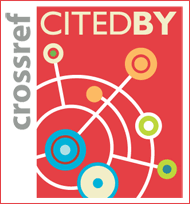IJICTDC Vol.6 No.2 pp.94-100
Cloud Databases for the Internet of Things
Abstract
The vision of the future Internet of Things is posing new challenges and opportunities for data management and analysis technology. Gigabytes of data are generated everyday by millions of sensors, actuators, RFID tags, and other devices. As the volume of data is growing dramatically, so is the demand for performance enhancement. When it comes to this Big Data problem, much attention has been paid to cloud computing and virtualization for their unlimited resource capacity, exible resource allocation and management, and distributed processing ability that promise high scalability and availability.
On the other hand, the types and nature of data are getting more and more various. Data can come in any format, structured or unstructured, ranging from text and number to audio, picture, or even video. Data are generated, stored, and transferred across multiple nodes. Data can be updated and queried in real time or on demand. Hence, the traditional and dominant relational database systems have been questioned whether they can still be the best choice for current systems with all the new requirements. It has been realized that the emphasis on data consistency and the constraint of using relational data model cannot well with the variety of modern data and their distributed trend. This led to the emergence of NoSQL databases with their support for a schema-less data model and horizontal scaling on clusters of nodes. NoSQL databases have gained much attention from the community and are increasingly considered as a viable alternative to traditional databases.
On the other hand, the types and nature of data are getting more and more various. Data can come in any format, structured or unstructured, ranging from text and number to audio, picture, or even video. Data are generated, stored, and transferred across multiple nodes. Data can be updated and queried in real time or on demand. Hence, the traditional and dominant relational database systems have been questioned whether they can still be the best choice for current systems with all the new requirements. It has been realized that the emphasis on data consistency and the constraint of using relational data model cannot well with the variety of modern data and their distributed trend. This led to the emergence of NoSQL databases with their support for a schema-less data model and horizontal scaling on clusters of nodes. NoSQL databases have gained much attention from the community and are increasingly considered as a viable alternative to traditional databases.






